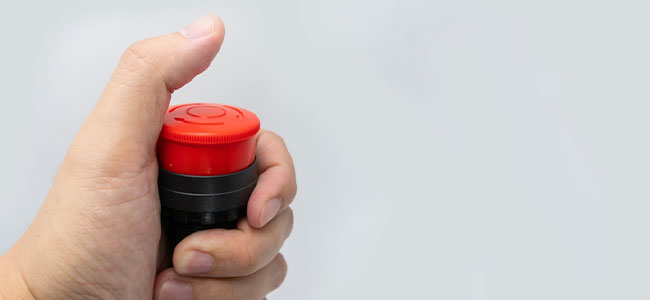Panic Buttons: When (and When Not) to Use These Devices
Panic button devices are synonymous with emergency help or immediate action, but this concept has evolved into a tool for the occupational health and safety of employees in sectors such as healthcare or hotels and hospitality.
The recognizable large red panic button has become synonymous with emergency help or some kind of instant, important action. Today, panic button devices are available in a number of different compact shapes and sizes. However, the design originated in WWII when the Air Force installed “panic buttons” for pilots to ring when the main communication system was down, and they had to abandon the aircraft.
This concept has evolved in many different directions over time, becoming a tool for the occupational health and safety of employees in sectors such as healthcare or hotels and hospitality. These are industries where there is potential for violence, assault and other on-the-spot emergencies.
Types of Panic Button Devices Available
The panic button has also evolved into several different designs for different jobs and types of work, depending on the occupational hazards and risk for violence.
- Wired panic alarms are hooked up to a specific location, usually somewhere discreet such as below a desk or countertop.
- Wireless panic alarms are not linked to a particular place and can be accessed on a separate, mobile device using Bluetooth and Wi-fi networks.
- In-app panic buttons are not located on a separate device but on an existing smartphone and other devices.
Why Someone Might Need a Panic Button
A panic button device is needed in situations where occupational violence is a serious possibility. Industries in which employees may experience such circumstances include healthcare and social services work (both in the hospital and the community), hotel and hospitality, retail and taxi drivers, who are 20 times more likely to be murdered than any other workers according to OSHA.
In some cases, local government or industry may have regulations requiring employees to carry a panic button at work. An example of this is the US hotel and hospitality sector which—in certain states and cities such as New Jersey—is making it mandatory for employers and hotels to equip their staff with panic buttons.
Workplace Violence Policy



